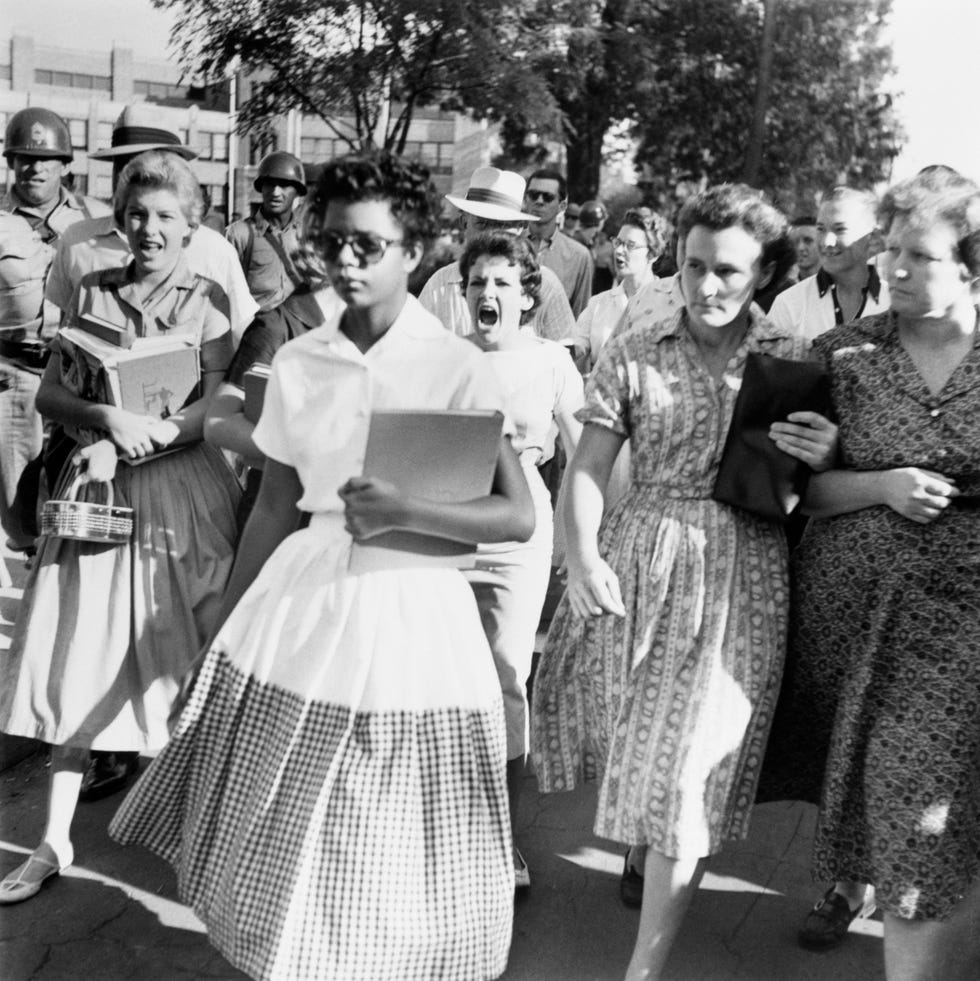You are viewing the article The Lasting Impact of the Little Rock Nine at Tnhelearning.edu.vn you can quickly access the necessary information in the table of contents of the article below.
Led by Arkansas NAACP president Daisy Gaston Bates, nine Black students took on the task of testing the U.S. Supreme Court’s 1954 landmark ruling of Brown v. Board of Education, which declared that segregation was unconstitutional in American public schools.
Under the glare of an angry mob of white students, 1,200 armed soldiers, media cameras and pro-segregationist governor Orval Faubus, the Little Rock Nine made their way to Central High. The students were: Minnijean Brown, Ernest Green, Thelma Mothershed, Gloria Ray, Melba Pattillo, Terrence Roberts, Jefferson Thomas, Carlotta Walls and Elizabeth Eckford.
President Eisenhower had to employ military force to keep the peace
Eight of the students carpooled together, but because her family didn’t have a phone, Eckford couldn’t be reached. Thus, she arrived by herself, which is how the famous photograph transpired of her coolly walking towards the school entrance with a notebook in hand as a screaming crowd surrounded her.
The weeks leading up to September 25th were trying for the Little Rock Nine, who were counseled and hand-selected by Bates. Although they tried to attend Central High earlier, the continual threats of violence and bloodshed prevented them from attending classes. It was only when President Dwight Eisenhower sent 1,200 armed soldiers from the 101st Airborne to keep the peace that the Little Rock Nine were able to complete a full day of school.
They faced constant harassment while in school
Once they were in school, their lives were difficult. For the rest of the school year, they faced constant verbal and physical harassment — Pattillo had acid thrown in her face, Ray was pushed down the stairs and Brown was expelled for retaliating after a group of girls threw a purse full of combination locks at her. Brown’s mother was even fired from her job because she wouldn’t give in to pressure to pull her daughter out of the school.
On May 25, 1958, Green was the only one of the Nine that graduated from Central High. He was the first African American to walk out of the school with a diploma. As for the rest of the students, they either received their diplomas through correspondence programs or from other high schools.
The Little Rock Nine left a lasting legacy
The Little Rock Nine went on to accomplish great things in their professional careers, some of them serving in the areas of higher education, mental health, and the criminal justice system. Green served under President Jimmy Carter as his assistant secretary in the Department of Labor. Pattillo became a reporter for NBC. Brown worked under President Bill Clinton in the Department of the Interior as the deputy assistant secretary for workforce diversity.
In 1999, President Clinton awarded the Little Rock Nine with the Congressional Gold Medal for their important role in the civil rights movement. Ten years later, President Barack Obama invited them to his inauguration.
Of the Nine, Thomas was the first to pass away. He died in 2010 from pancreatic cancer.
Thank you for reading this post The Lasting Impact of the Little Rock Nine at Tnhelearning.edu.vn You can comment, see more related articles below and hope to help you with interesting information.
Related Search:





